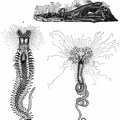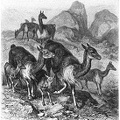684/1613
Wilson’s Warbler
When you make this bird’s acquaintance, you will wonder why he was not called a “Black-capped Warbler,” for no name would be more fitting. In fact, many ornithologists now refer to him by that name. Those who do their birding in the Western United States might feel the same about the Pileolated Warbler, which is similar. Both birds show olive-green above and yellow below, with no wing marks or other distinguishing features, except the black cap worn by the males. Some females carry this mark faintly outlined, but it is lacking on the young. The western bird is slightly larger.
- Author
- The Project Gutenberg EBook of Introduction to Our Bird Friends, Volume 2, by Lenwood Ballard Carson
Published 1957 - Posted on
- Wednesday 8 July 2020
- Dimensions
- 723*887
- Tags
- Birds
- Albums
- Visits
- 817
- Downloads
- 34
 Download Photo
Download Photo





